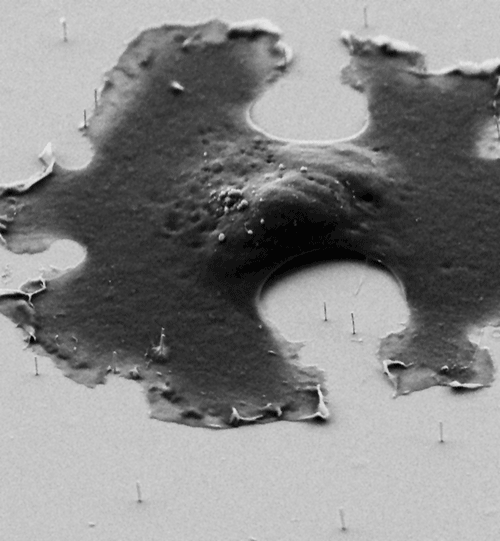The Research Network
Functional Nanostructures
was funded by the
Baden-Württemberg Stiftung.
Against the background of a growing number of electronic devices being implanted in patients in order to treat various diseases – including arrhythmia, parkinsonís disease, deafness and diabetes – the development of miniaturized technologies capable of producing electrical energy has turned into a principal ambition for different scientific disciplines. In this context, nano- and microtechnology provide challenging new tools to access macroscopic and microscopic biochemical systems inspired by natureís energy production concepts. Mostly, these systems are characterized by being self-renewing and possessing an enormous degree of efficiency. In particular, the fusion of “living” biomaterial – such as cells – with synthetic systems will enable access to groundbreaking new bionic technologies in the future.
The objective of this project is the development of a bionic microgenerator as a macroscopic power supply, facilitating low-loss conversion of chemical to electrical energy by self-integration of synthetic and biological building blocks. This system, orchestrating molecular, nanoscopic as well as microscopic components, harnesses the electrochemical resting potential of eukaryotic cells or bioengineered lipid vesicles with genetically modified, membrane-reconstituted ion pumps and channels which control the voltage potential generated between the intra- and extracellular compartment. Therefore, cells will be plated on 3-dimensional arrays of partly isolated, monocrystalline metal nanoelectrodes generated by a combination of chemical and physical methods.
Such bionic generators have the great potential to serve as efficient power supplies for a wide range of applications, such as self-regenerating and biocompatible prostheses or body implants, like cardiac and brain pulse generators, cochlear implants, insulin pumps or devices to monitor body functions.

A single eukaryotic cell plated on a nanoelectrode interface. The partly isolated gold nanoelectrodes have a diameter of approximately 100 nm.